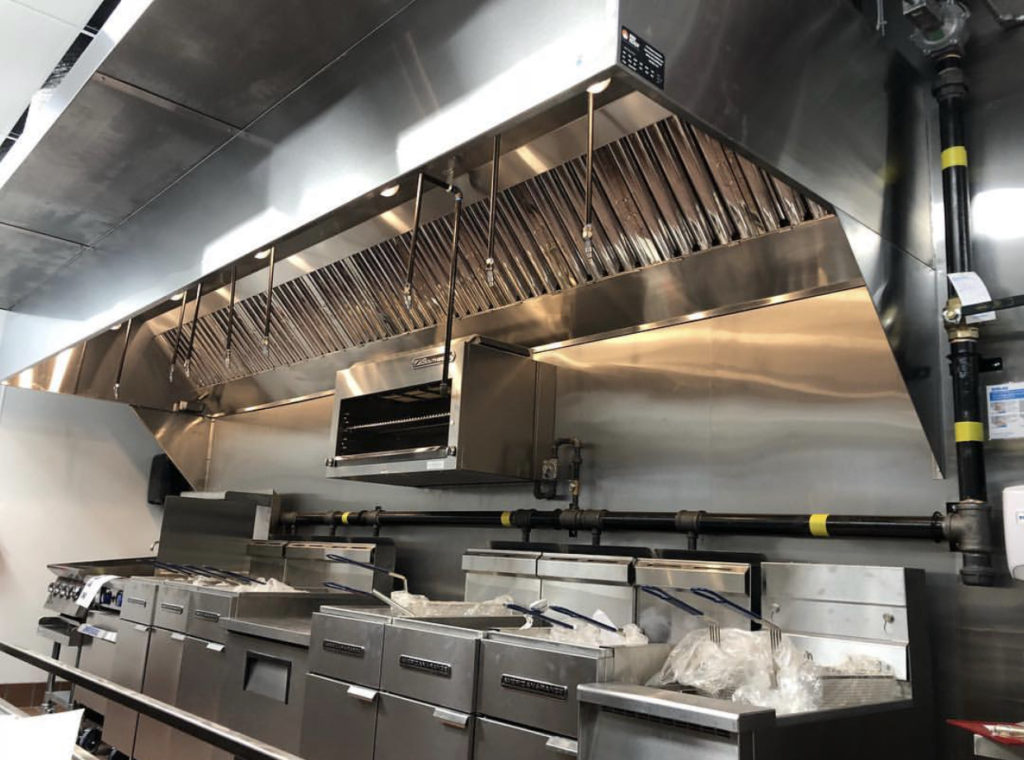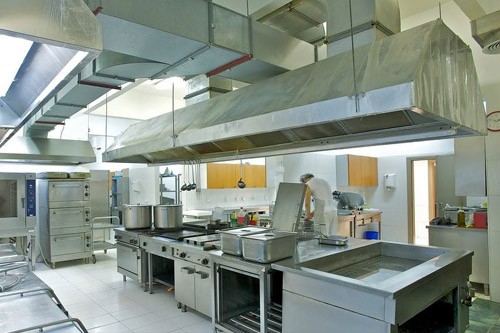The kitchen is the heart and soul of any restaurant. However, it’s also one of the most dangerous areas. Kitchens produce a tremendous amount of heat, meaning restaurant fires are not unusual.
With all the flames, cooking oils, and fans present, kitchen fires can quickly spread and grow out of control. That’s where kitchen hood systems come into play.
Here’s a brief primer on how kitchen hood systems work, along with their benefits and maintenance requirements.
How a Hood Suppression System Works
Hood fire suppression systems work similarly to fire sprinkler systems, with one major difference: the fire suppressant itself. While traditional fire sprinkler systems use water, kitchen hood systems rely on various liquids, gasses, and foam agents to put out fires.
The system has sensors that can detect flames or excessive heat. When these sensors are triggered, the system discharges an extinguishing substance, putting out the fire. These systems don’t use water, as water-based extinguishers can make grease fires spread more rapidly.
Modern suppression systems are also equipped with a manual mechanism that allows employees to quickly activate them if they fail to detect a fire fast enough.
Furthermore, many systems can automatically cut off the gas and power supplies under the hood, eliminating the risk of sparking and flare-ups, which could worsen fires.
Because kitchen fires are so dangerous and common, hood suppression systems are a strict requirement in most restaurants and commercial kitchens.
Benefits of a Hood Suppression System
Hood suppression systems have a number of benefits over traditional fire extinguishing methods. First, they provide an immediate response to a fire. Hood suppression systems can activate and put out a fire completely in just a few seconds. No other form of fire extinguishing can put out a fire faster.
Second, suppression systems significantly reduce the risk of damage to the rest of the kitchen. Hood systems are targeted to put out fires in specific areas of the kitchen. When a suppression system is activated, it usually extinguishes the fire without impacting other areas of the kitchen.
Finally, suppression systems are customizable. All restaurants have slightly different layouts, equipment setups, and catalogs of ingredients. They therefore all have slightly different needs. Hood suppression systems can be personalized and installed in a way that meets the needs of any unique commercial kitchen.
Maintenance of Kitchen Hood Systems
While hood suppression systems are inarguably the most effective means of putting out kitchen fires, they’re only effective as long as they’re in good working order.
Most systems need to be inspected every six months. An inspection ensures that all components are in good working condition and will work as intended if needed.
State and local fire departments also require inspections. If your kitchen hood system hasn’t been inspected and cleared, you may be penalized for being out of code compliance, putting your restaurant’s operation at risk.
Occasionally, hood systems may need repairs or new parts. Over time, the whole system might even need to be replaced.
The exhaust hood also needs to be cleaned regularly, as the hood buildup is not only dangerous but can negatively impact the function of the hood system.
Trust Preventive Fire for Your Fire Safety Needs
Preventive Fire is fully certified to install, repair, service, and recharge your restaurant hood system. We even provide 24-hour emergency service if you need a repair right away.
If you’re in a crunch to pass an inspection, our staff can respond quickly and ensure that everything is up to code and working the way it’s supposed to. Contact Preventive Fire today to get help with all of your kitchen hood system needs.


